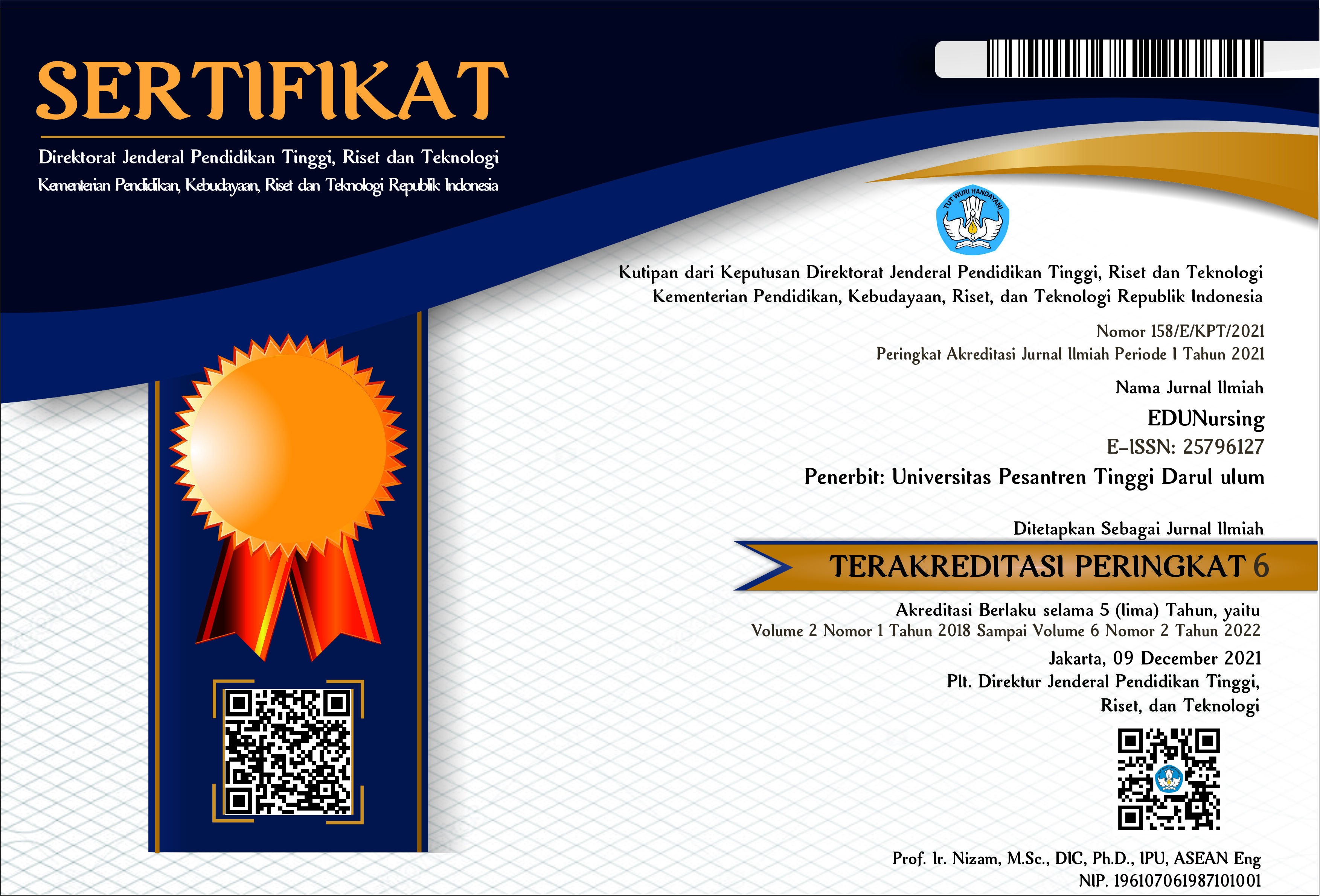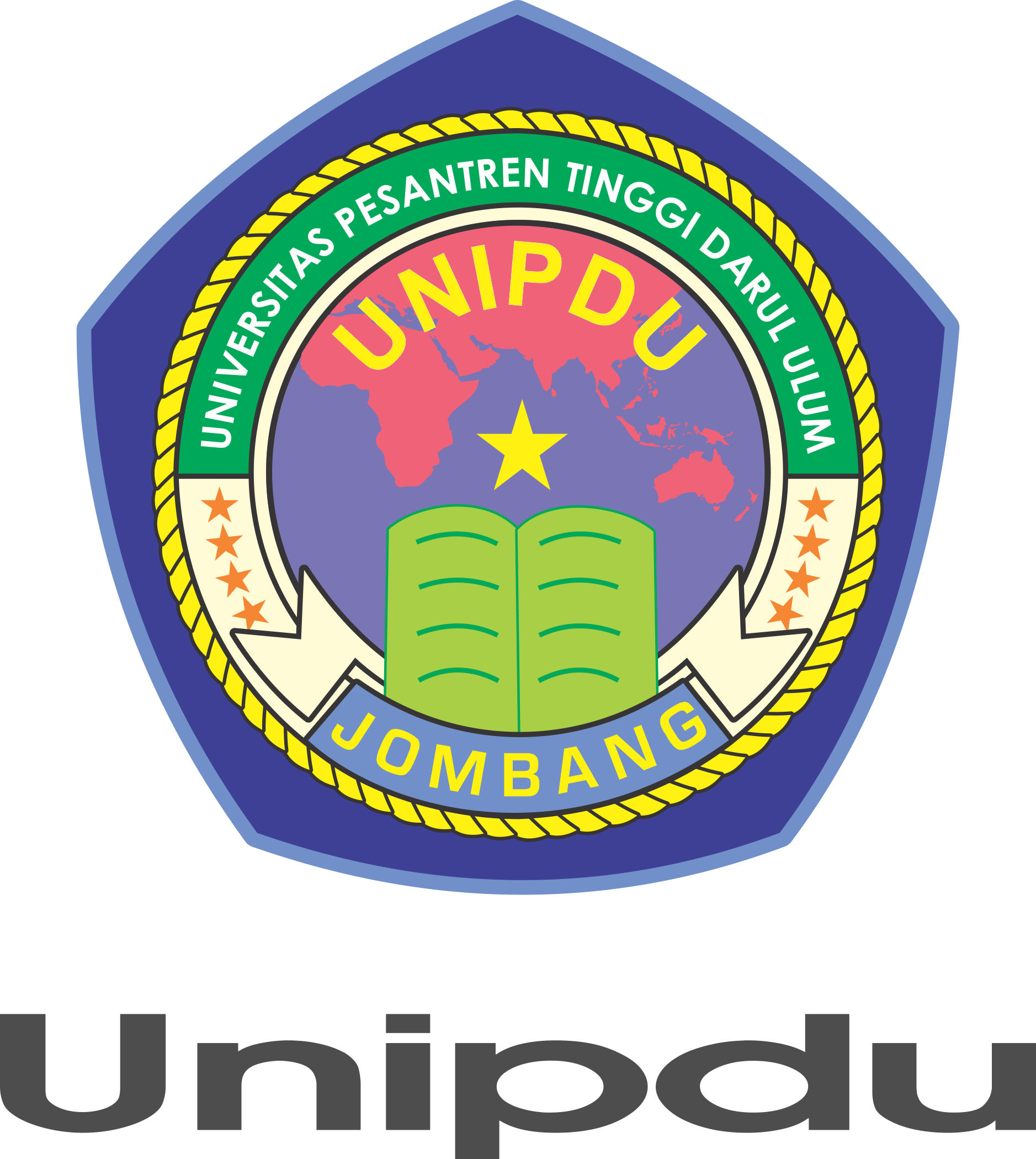ASUHAN KEPERAWATAN ANAK THALASEMIA PERBANDINGAN PENGKAJIAN EMERGENCY NEUROLOGI MENGGUNAKAN SIRIRAJ SCORE (SS) DENGAN METODE NATIONAL INSTITUTE OF HEATH STROKE SCALE (NIHSS)PADA PASIEN STROKE DI RUMAH SAKIT ISLAM JOMBANG
https://doi.org/10.26594/edunursing.v2i1.1259
Abstract
Stroke cases in Indonesia have increased every year in East Java, the number of stroke cases has increased by 16%. The success of handling stroke depends on the speed, accuracy and accuracy of the beginning of the incident. Based on existing stroke cases, a comprehensive assessment method is needed, it aims to determine the appropriate action in stroke patients so as to minimize the severity of the stroke. The National Institutes of Health Stroke Scale (NIHSS) study is the first step in the nursing process by collecting accurate data to minimize the level of disability and death in stroke cases. Using statistical analysis between assessors, reliability was determined by calculating the intraclass correlation coefficient (ICC) using the ANOVA test. Retrospectives represent clinically relevant values. Receiver operator characteristics (ROC) were used as an accuracy of NIHSS assessments. Clinically or statistically significant differences between estimated mean scores correspond to 6 assessors (ANOVA: overall P = 0.15, entry P = 0.28, discharge P = 0.59). The pair of assessors were also very good at ICCs ranging from 0.70 to 0.89. a partner of more than 90%. The estimated value of NIHSS is 5 points with a high level of reliability and validity. NIHSS is designed as a tool to measure stroke patients. this scale to evaluate the sharpness of stroke patients, determine the right treatment, and predict the outcome of stroke patients.
Keywords: NIHSS, Stroke Specifications
References
Departemen Kesehatan Republik Indonesia (Riskesdas) (2013). Laporan Hasil Riset Kesehatan Dasar Indonesia.
Kemenkes. (2014). Pedoman pengendalian stroke. Jakarta. Kementrian Republik Indonesia direktorat pengendalian penyakit tidak menular.
Rumantir CU. 2007. Gangguan peredaran darah otak. Pekanbaru : SMF Saraf RSUD Arifin. Achmad/FK UNRI. Pekanbaru.
Hartigan I, EO connel, SO brien, E weathers. (2014). The irish national stroke awareness campaign: astroke of success. Apilied nursing research. 10 (16).
Harding and Bridgewater. (2010). Stroke scale you can use. Journal emergency nursing. 36 (1)
Hudak & Gallo. (2010). Keperawatan kritis. pendekatan holistik. Edisi 6. Jakarta : ECG.
Erdiana Oktaviani, Guardian Yoki Sanjaya, Mubasysyir Hasanbasri. (2013). Sentralisasi Layanan Emergensi Sebagai Upaya Peningkatan Durasi Response Time. Seminar Nasional Sistem Informasi Indonesia. FK UGM
Ismail Setyopranoto. (2011). Stroke Gejala dan penatalaksanaan. continuing medical education. Cdk: 185 vol : 38 no.4
Narakusuma Wirawan & Ida Bagus Kusuma Putra. (2013). Prehospitalized Management On Acute Stroke. e-jurnal medika udayana 694–709. vol. 2 no. 4
Dhakal M. A. (2000). Study of correlation of clinical scoring (Siriraj stroke score) and CT scan in patient stroke [Thesis]. Kathmandu: Tribhuvan University Teaching Hospital.
Sherin A, Khan A, Rehman S, Shah NH, Shabbier G, Zarif M. (2011). Comparability and validity of Siriraj stroke score and Allen stroke score in diff erentiation of acute ischemic and haemorrhagic stroke. JPMI.
Logan RF, Poulton SM, Severs MP. (1994). Clinical scores in the diff erential diagnosis of acute stroke. BMJ.
Downloads
Published
How to Cite
Issue
Section
License









